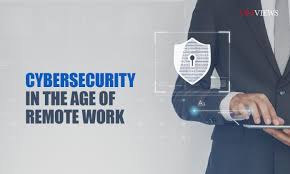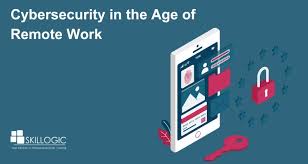
When the world shifted to remote work en masse in the early 2020s, many hailed it as a revolution. Employees enjoyed flexibility, companies reduced costs, and digital collaboration tools made it all possible. But beneath this digital progress, a darker force was growing just as fast: cybercrime.
By 2025, remote work is no longer a temporary response to crisis—it’s the norm. But with more people working from bedrooms, cafés, and coworking spaces across the globe, hackers have found a new goldmine. From phishing scams and ransomware to data breaches and insider threats, cybercrime has adapted to exploit this new, highly connected workforce.
So, how has remote work changed the cybersecurity landscape? And what can individuals and organizations do to stay safe in this new digital era?
Let’s explore the rising threat of cybercrime—and how to fight back.
1. The Perfect Storm for Hackers
Remote work has created the ideal conditions for cybercriminals:
- Employees are no longer protected by centralized, company-wide firewalls.
- Home Wi-Fi networks are often less secure than office infrastructure.
- Workers use personal devices and apps for business tasks—blurring the line between work and private life.
- There’s more reliance on cloud platforms, email, and video conferencing—each a potential attack vector.
In short, the digital footprint of companies has exploded, and so has their exposure to risk.
2. Phishing Gets Smarter and Scarier
Phishing—the act of tricking people into revealing sensitive information—is still the #1 attack method, but it has evolved dramatically.
In 2025, phishing emails:
- Use AI to mimic writing styles, making them nearly indistinguishable from real coworkers.
- Include deepfake audio or video messages to impersonate bosses or executives.
- Target remote workers directly, often referencing real meetings, tools, or projects to appear authentic.
With employees scattered across time zones and working alone, there’s less opportunity for quick reality checks or face-to-face verification. A single click can now lead to a company-wide breach.
3. Ransomware on the Rise
Ransomware attacks—where hackers lock or steal company data and demand payment—have skyrocketed since the shift to remote work.
Why? Because:
- Remote environments are harder to defend.
- Many businesses still lack proper data backup protocols.
- Paying the ransom is often cheaper and faster than restoring systems.
Hackers target not only large corporations, but also schools, hospitals, law firms, and startups, knowing they may lack the budget or expertise to protect themselves.
Some attacks even combine ransomware with data leaks, threatening to expose sensitive customer info if the ransom isn’t paid.
4. Weak Passwords, Big Problems
Despite years of warnings, weak and reused passwords remain a major vulnerability—especially among remote workers who juggle dozens of logins for tools like Zoom, Slack, Trello, and Gmail.
Hackers use automated tools to exploit:
- Common passwords (e.g., “123456”, “password”, or “qwerty”)
- Passwords leaked from previous breaches
- Poorly secured remote desktop connections
In 2025, passwordless solutions like biometric logins and multi-factor authentication (MFA) are more widespread—but still not universal. Until they are, human error remains one of the biggest threats to digital security.
5. Insider Threats in a Distributed World
Not all threats come from the outside. In the age of remote work, insider threats are more difficult to detect:
- A disgruntled employee could download sensitive files unnoticed.
- Remote contractors may have access to more than they need.
- Employees might unintentionally expose data by using unapproved software or sharing the wrong document.
Without physical oversight or close team collaboration, it’s harder to spot suspicious behavior or enforce digital hygiene practices.
6. Cloud Services: A Double-Edged Sword
Cloud platforms like Google Workspace, Microsoft 365, and Dropbox have made remote work possible—but they also expand the attack surface for hackers.
Misconfigured cloud storage can leave files publicly exposed. A single stolen login can unlock gigabytes of sensitive company data. And third-party integrations—while useful—can introduce unexpected vulnerabilities.
In 2025, more organizations are investing in zero-trust security models, where no device or user is trusted by default, even if they’re inside the network.
7. The Human Element: Still the Weakest Link
No matter how advanced cybersecurity tools become, humans remain the easiest target. In the rush of remote work, people are more likely to:
- Open emails without careful inspection
- Click on suspicious links
- Skip software updates
- Use personal devices with outdated antivirus protection
Cybercriminals know this—and they exploit it daily.
That’s why cybersecurity training has become essential for every employee, not just IT professionals. In many companies, regular “phishing drills” and digital literacy workshops are now standard.
How to Stay Safe in the Remote Era
Whether you’re an individual freelancer or a global organization, these practices are critical in 2025:
✅ Use strong, unique passwords with a password manager
✅ Enable multi-factor authentication (MFA) wherever possible
✅ Keep devices and apps updated—patches close known vulnerabilities
✅ Avoid public Wi-Fi or use a VPN when working remotely
✅ Back up important data to secure, offline locations
✅ Use endpoint protection on all work devices
✅ Train employees regularly on the latest threats
✅ Restrict access to sensitive files to only those who need it
Final Thoughts
Remote work has unlocked incredible flexibility, freedom, and global collaboration. But it has also opened the door to a new generation of cybercriminals who are smarter, faster, and more invisible than ever before.
The battle against cybercrime in the age of remote work isn’t just a tech issue—it’s a human one. It requires a culture of awareness, responsibility, and resilience.
Because in 2025, the biggest risk isn’t just working from home—it’s letting your guard down while you do it.
